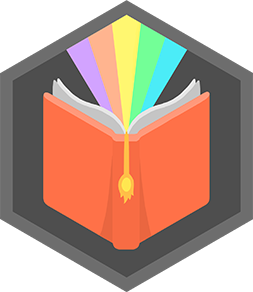Tell us what poetry means to you
Write a short poem about what poetry means to you, illustrate it with drawings or collage, then read it aloud to share your ideas.



Step-by-step guide to tell us what poetry means to you
Step 1
Gather all the materials and bring them to a clear workspace.
Step 2
Sit quietly and close your eyes to imagine how poetry sounds and makes you feel.
Step 3
Open your eyes and write five words or short phrases that come to mind.
Step 4
Decide if you want to write a short four-line poem or a few short sentences.
Step 5
Write your first draft of the poem using at least two words from your list.
Step 6
Read your draft silently and circle any words you want to change.
Step 7
Rewrite your poem neatly on a fresh sheet of paper.
Step 8
Choose whether you will illustrate with drawings or a collage.
Step 9
Make your illustration by drawing with colouring materials or by cutting and gluing images from magazines.
Step 10
Attach your illustration to the poem with glue or tape.
Step 11
Practice reading your poem aloud three times using expression and a clear voice.
Step 12
Read your poem aloud to a family member or friend and listen to their feedback.
Step 13
Share your finished poem and illustration on DIY.org
Final steps
You're almost there! Complete all the steps, bring your creation to life, post it, and conquer the challenge!


Help!?
What can I use if I don't have magazines, glue, or coloring materials for the collage and illustration?
If you don't have magazines, use old newspapers or print images from the internet, substitute glue with tape or a stapler, and replace coloring materials with crayons, colored pencils, stickers, or fabric scraps to attach to your fresh sheet of paper.
I'm stuck and can't think of words or can't start my poem—what should I do?
If you get stuck during the 'sit quietly and close your eyes' and 'write five words' steps, try naming things you can see, hear, smell, or feel right now to build your five-word list and then use at least two of those words to write your first draft.
How can I adapt this activity for different ages or abilities?
For younger children, have a parent write the child's ideas during the 'write your first draft' step and let them focus on simple drawings, while older kids can write a longer poem, revise more times, and create a detailed collage before sharing on DIY.org.
How can we extend or personalize the finished poem and illustration beyond the basic steps?
To extend the activity, record the 'practice reading aloud three times' step as an audio or video performance to upload to DIY.org, decorate and frame the rewritten poem, or combine several poems and collages into a handmade booklet.
Watch videos on how to write and share a short poem about what poetry means to you
✏️ What is Poetry? | Poetry Writing for Kids and Beginners
Facts about poetry and creative writing for kids
🎨 Collage (mixing paper, photos, and textures) was popularized by artists like Picasso and is great for illustrating poems.
🌍 Every culture has poetry — many poems were first shared by voice long before people wrote things down.
📝 Haiku poems are only 3 lines long (5-7-5 syllables) — tiny poems can be very powerful!
🎙️ Poetry slams began in the 1980s and turned reading poems aloud into lively competitions.
📚 Poets for kids such as Shel Silverstein and Dr. Seuss used rhythm and rhyme to make lines stick in your head.
How do I lead a 'Tell us what poetry means to you' activity with my child?
What materials do I need for a poetry-illustration-and-reading activity?
What ages is this 'poetry means to you' activity suitable for?
What are the benefits of doing a 'Tell us what poetry means to you' activity with kids?


One subscription, many ways to play and learn.
Only $6.99 after trial. No credit card required



